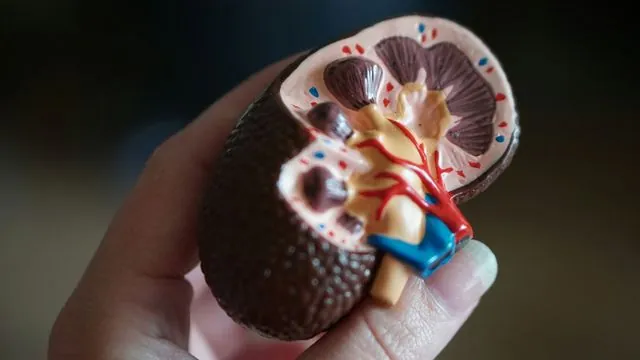
Breakthrough Gene Therapy Research Offers New Hope for Chronic Kidney Disease Patients
2025-01-02
Author: Mei
In a groundbreaking development, researchers at Oregon Health & Science University (OHSU) have made significant advances in gene therapy techniques aimed at treating chronic kidney disease. Using adeno-associated virus (AAV) vectors, scientists can potentially overcome past challenges related to delivering effective therapies directly to the kidneys.
Historically, various types of AAV capsids—the protein shells that encase the virus—have been utilized for gene delivery, but not all have been effective in targeting kidney cells. Traditional intravenous (IV) injections have shown limited success due to their inability to focus on kidney tissues, often resulting in adverse effects, particularly on liver function.
This latest research, published in Nature Communications, highlights the discovery of various strategies to enhance gene delivery to the kidneys, including the use of specific AAV capsids and alternative injection methods, either through IV administration or direct injection into the renal vein or renal pelvis, locations much closer to the kidneys.
In their experiments, the team assessed 47 different types of AAV capsids in mice. Remarkably, one capsid, AAV-KP1, demonstrated exceptional efficiency when injected directly into the kidneys, effectively targeting kidney cells while minimizing liver-related side effects. Conversely, AAV9, which usually fails in healthy kidneys, showed improved kidney targeting through IV injection in instances of chronic kidney disease.
According to Dr. Hiroyuki Nakai, senior author of the study, previous misconceptions about the effectiveness of AAV therapy for kidney ailments have been dispelled. “Our findings indicate that gene delivery to renal tubules and podocytes—two crucial cell types for effective gene therapy—is indeed achievable, particularly for certain kidney disease types,” he stated.
Dr. Taisuke Furusho, the study's lead author who was a postdoctoral scholar in Nakai’s lab, emphasized the complexity of targeting kidney tissue due to its diverse cellular architecture. With recent evidence suggesting a growing prevalence of genetic factors in chronic kidney disease across both pediatric and adult populations, correcting gene expression could have transformative implications.
Notably, the study revealed that the behavior of capsids differs significantly in terms of their accumulation and dissemination within the body. Direct injection of AAV-KP1 led to direct targeting of kidney cells, while AAV9 exhibited widespread distribution regardless of the delivery method.
The research also illuminated vital differences in cell entry mechanisms when comparing species, with nonhuman primates showing a unique ability to allow AAV vectors to penetrate kidney cells even in the presence of pre-existing neutralizing antibodies. These insights underscore the importance of selecting the right capsid and method of injection tailored to both the specific species and the condition being treated.
Overall, this study lays the groundwork for future applications of AAV-based gene therapies in kidney treatment, potentially revolutionizing how chronic kidney disease is approached clinically. The focus on tailored methods for delivery could lead to more effective interventions and improved outcomes for patients affected by this challenging condition.
As exciting advancements continue to unfold in this field, the possibility of significant progress in treating chronic kidney disease is brighter than ever. Stay tuned for more updates as researchers work tirelessly to bring these innovative therapies from the lab to the clinic!
 Brasil (PT)
Brasil (PT)
 Canada (EN)
Canada (EN)
 Chile (ES)
Chile (ES)
 Česko (CS)
Česko (CS)
 대한민국 (KO)
대한민국 (KO)
 España (ES)
España (ES)
 France (FR)
France (FR)
 Hong Kong (EN)
Hong Kong (EN)
 Italia (IT)
Italia (IT)
 日本 (JA)
日本 (JA)
 Magyarország (HU)
Magyarország (HU)
 Norge (NO)
Norge (NO)
 Polska (PL)
Polska (PL)
 Schweiz (DE)
Schweiz (DE)
 Singapore (EN)
Singapore (EN)
 Sverige (SV)
Sverige (SV)
 Suomi (FI)
Suomi (FI)
 Türkiye (TR)
Türkiye (TR)
 الإمارات العربية المتحدة (AR)
الإمارات العربية المتحدة (AR)